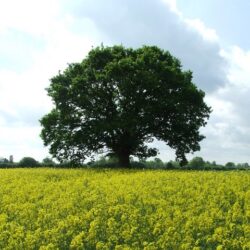
Composed in the late eighth or early seventh century BCE in the southern Kingdom of Judah, 'J' is one of the primary sources of the Masoretic text of the the Hebrew Bible, The J source was responsible for the first major metamorphosis of the oldest recognized kernel of the Biblical narrative (known as the E source). By combining the book of E, the Book of the Covenant (a law code found in Exodus 21–24), and the northern book of Judges (predecessor to the canonical book of Judges), and supplementing them with J's own text, J composed a cohesive historical work which chronicles the events from the creation of the world to the crowning of King David in nine story cycles, focusing on the Israelite line. J’s editorial style is highly invasive. In adding their own voice to that of their predecessor E, J often overwhelms the reader with their point of view to the extent that E’s original narrative threads are no longer apparent.
Filter resources by Category
Filter resources by Tag
Filter resources by Collaborator Name
Filter resources by Language
Filter resources by Date Range
Resources filtered by COLLABORATOR: “the Mesorah (Masoretic layer 'D2')”
(clear filter)
Contributed by:
Tzemaḥ Yoreh, the Mesorah (TaNaKh), the Mesorah (Masoretic kernel 'E'), the Mesorah (Masoretic layer 'J'), the Mesorah (Masoretic layer 'D2'), the Mesorah (Masoretic layer 'P'), Masoretic layer 'H', the Mesorah (Masoretic layer 'B'), Aharon N. Varady (transcription)
The text of parashat Bo, distinguished according to the stratigraphic layers of its composition according to the Supplementary Hypothesis. . . .
Contributed by:
Tzemaḥ Yoreh, the Mesorah (TaNaKh), the Mesorah (Masoretic layer 'J'), the Mesorah (Masoretic layer 'D1'), the Mesorah (Masoretic layer 'D2')
The text of parashat Vayelekh, distinguished according to the stratigraphic layers of its composition according to the Supplementary Hypothesis. . . .
Contributed by:
Tzemaḥ Yoreh, the Mesorah (TaNaKh), the Mesorah (Masoretic layer 'D1'), the Mesorah (Masoretic layer 'D2'), the Mesorah (Masoretic layer 'J'), Masoretic layer 'H', Aharon N. Varady (transcription)
The text of parashat v’Zot haBrakhah, distinguished according to the stratigraphic layers of its composition according to the Supplementary Hypothesis. . . .

